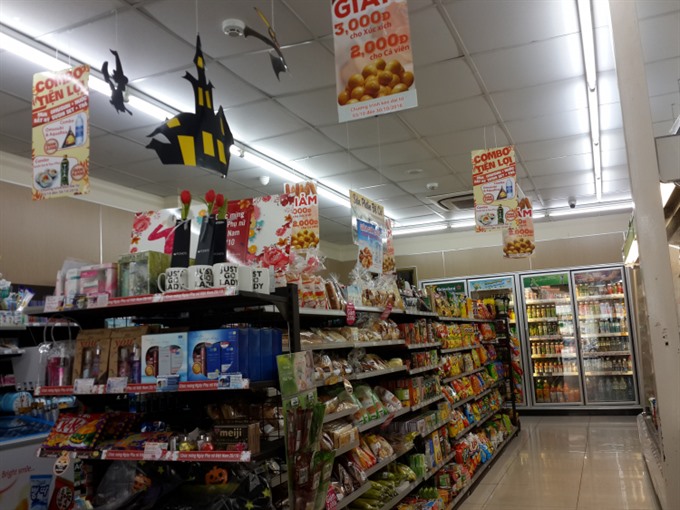 Economy
Economy

The development of wholesale and retail infrastructure in Việt Nam has faced its fair share of rocky moments, but the industry’s growing role in consumption has put it at the forefront of the economy.
 |
| A convenience store in Hà Nội. The Government should create favourable conditions to transfer more than 2 million shops belonging to household businesses to convenient stores. — Photo nguoitieudung.com.vn |
HÀ NỘI — The development of wholesale and retail infrastructure in Việt Nam has faced its fair share of rocky moments, but the industry’s growing role in consumption has put it at the forefront of the economy.
Nguyễn Văn Hội, deputy director of the Domestic Market Department under the Ministry of Industry and Trade made the statement on Fridayat a conference on the role of management agencies and businesses in developing trade and services, held in Hà Nội.
Hội said the average growth of retail and consumption services revenue was 10 per cent a year from 2011-17. This meant that the revenue increased from VNĐ3.5 trillion (US$153.5 million) in 2016 to VNĐ4.2 trillion in 2017.
In the first four months of this year, it was estimated at VNĐ1.4 trillion, up 9.8 per cent from the same period last year. The average growth rate of combined retail and services revenue is always higher than GDP growth.
“However, the trade infrastructure system has been distributed unevenly, and is focused mainly in the cities. The number of markets and supermarkets in rural and mountainous areas remains low in comparison,” he said.
In addition, markets and supermarkets in rural areas are concentrated on small scale retail outlets. Meanwhile, foreign investment is mostly poured into modern commercial centres in big cities, he said.
The reason for this is that general awareness on the potential of domestic trade is not what it should be, and this has amounted to a lack of investment in infrastructure outside of major urban zones.
Trần Thị Phương Lan, deputy director of the municipal Department of Industry and Trade said developed countries often conduct market studies before launching a product.
“However, we are the opposite," she said. "We produce a product first, and then research it once its on the market."
She suggested that producers should build sustainable consumption channels and not depend on a small group of traders.
The logistics system should also be improved to reduce transport costs, which will in turn leave producers with more money to invest, boosting the potential for competition.
Prof Hoàng Thọ Xuân, former director of the Domestic Market Department said the Government should clarify and prioritise the necessary steps in the coming time.
These should include developing a supply chain that connects producers, processors, and distributors nationwide.
“If local firms do not rush to implement solutions, foreign companies will dominate the market, as they have already established effective supply chains,” he added.
"Chains of convenient stores should also be established," he said. "The Government should create favourable conditions to transfer more than 2 million shops of household businesses to modern 24 hour convenient stores."
“If we implement the two above tasks effectively, we will see clear changes in trade. Of course, this must be a gradual transformation,” he said.
Đinh Việt Thanh, from the Garment 10 Corporation said the legal system should be properly enforced to ensure that adjustments to the trade and service industries are reflected in reality. Management agencies should listen to businesses’ opinions to adjust policies.
By the end of last year, the country had 957 supermarkets and 189 trade centres nationwide. Most of them are located in big cities and densely populated urban areas. Five localities including Hà Nội, Hải Phòng, Đà Nẵng, Hồ Chí Minh City and Cần Thơ accounted for almost half of all supermarkets and commercial centres in the country. — VNS




